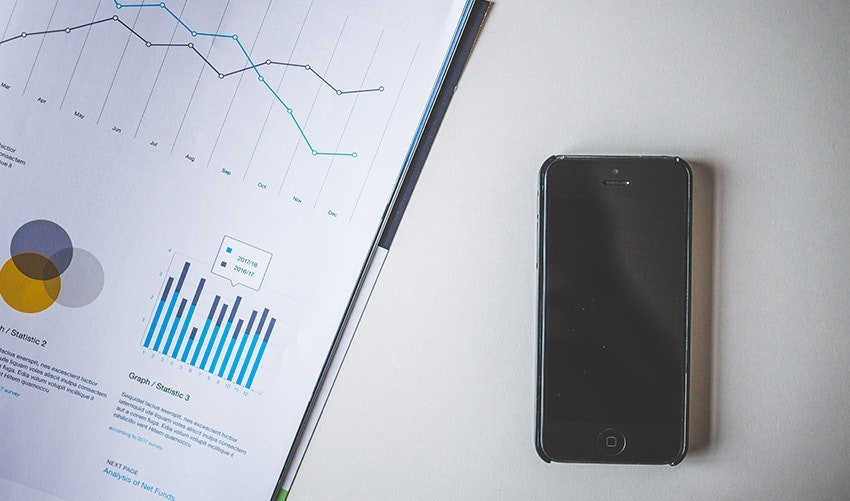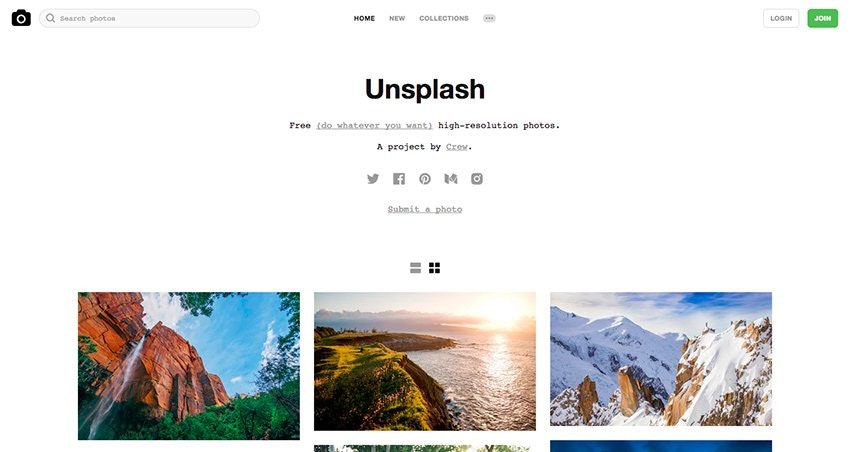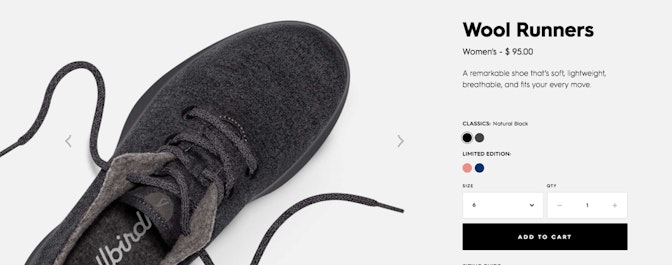Approximately 2.1 billion people log into Facebook every day. With such a huge active audience, ecommerce retailers are understandably eager to invest in Facebook marketing.
Of course, the vast majority of these 2.1 billion users won’t be ideal customers for your business. Fortunately, Facebook offers the ability to create extremely targeted ads. You can make sure your ads are only getting in front of the consumers who are most likely to buy your products.
If you’ve never created a Facebook ad campaign before, don’t worry: That’s what this guide is for. Follow these six steps to develop a high-converting Facebook marketing strategy.
Identify your basic objective for a high-converting Facebook marketing campaign
Before you can do anything else, you must determine your primary aim for advertising on Facebook. There are 10 options:
- Send people to your site
- Increase conversions on your site
- Boost your Facebook posts
- Promote your page
- Get installs of your app
- Increase engagement in your app
- Reach people near your business
- Raise attendance at your event
- Get people to claim your offer
- Get video views
Some of these objectives clearly don’t apply to ecommerce businesses. You’ll be most successful with one, driving website traffic; two, increasing email signups or purchases on your site; three, broadening the reach of your Facebook posts, which can help you promote products or gain followers; and/or nine, encouraging potential customers to use a coupon code or promotion.
Website conversions may seem like the obvious objective for your campaign. However, defining “conversion” as “purchase” might not be the wisest choice. In addition, Facebook recommends choosing a conversion event that reaches at least 25 conversions per day. If your conversion rate is lower, it’s harder to get accurate data. And if you don’t know who’s converting, what’s driving them, and so on, you’ll struggle to optimise.
Low-friction ads typically perform better. Rather than measuring success by the number of people who buy from you, think about measuring how many people sign up for your mailing list. You can slowly nurture them with drip email marketing campaigns, making their total lifetime value much higher (and increasing the chance they’ll become a customer in the first place).
In fact, the best objective to start with is probably website traffic. When you’re launching your first campaign, neither you nor Facebook has any data on which types of people convert. Casting a wider net and first determining which demographics click to your site gives you valuable information you can then use to target more specific audiences in the future.
Once you choose an objective, Facebook will present you with the optimal ad options. You can have multiple ads under one campaign. The easiest way to think about it is that each campaign represents a specific goal; for example, “Increase Website Traffic.” Ad sets are the next level down: they help you target different audiences. To give you an idea, you might have an ad set targeting 20 to 24-year-old urban men and another ad set targeting 21 to 23-year-old suburban men.
Each ad set contains multiple ads. These tend to look slightly to extremely different in terms of design, color scheme, copy, and so on—for a couple reasons. First, you don’t want to show people the same ads over and over again, as they’ll become desensitized to them. Second, using different ads helps you hone in on the most effective versions.
Facebook marketing: choose your audience

Facebook marketing: you can choose who sees your ads based on numerous filters.
Finding the most effective criteria for your ideal customers isn’t a simple, quick process. It’s reminiscent of the Goldilocks children’s story: you’re going to have to experiment before you find the right fit.
Facebook lets you choose who sees your ads based on these filters:
- Location
- Age
- Gender
- Language
- Relationship
- Education
- Work
- Ethnic Affinity
- Generation
- Parents
- Politics
- Life Events
- Interests
- Behaviors
- Connections
Because you can get so granular, you might be tempted to target extremely specific demographics. But it’s better to start out with a broad audience and refine it based on your results. To give you an idea, imagine you sell upscale athletic gear. Maybe you start with women in their thirties and forties who are interested in fitness. After you’ve run your ads for a few weeks, Facebook shows you that these ads perform best with 35 to 40-year-old women who take zumba, cycling, or barre classes. You’d use that knowledge to tailor your targeting accordingly.
Not sure which filters to start with? Use site analytics to learn more about your current customers, including which searches led them to your site and which locations they’re from. You can also run customer surveys to learn demographic data like age, gender, income, job, and so forth.
Facebook gives you the ability to target custom audiences based on their email address or phone number. This option is incredibly useful for ecommerce retailers: You can retarget former customers using the information they provided on checkout. Simply upload a database of their contact information into Facebook, and the site will find the matching users.
Lookalike audiences are even more powerful. First, you choose a custom audience. This audience could come from your imported contact information, the list of people who have converted on a specific action, or the list of people who have liked your Facebook page. Then, Facebook pulls from demographic data, including age, gender, and location, along with interests and categories, to identify the users who most closely match your custom audience.
In other words, rather than guessing who your next customers will be, you can use this feature to scientifically find them.
Facebook marketing: choose your budget
Since you’re going to be running Facebook ad campaigns for a predetermined period of time, you’ll want to set a lifetime budget. That means if your lifetime budget is $50 and your ad is set to run for five days, Facebook will put $10 per day toward distributing your ad.
(You can also set daily budgets. With this choice, you could choose to spend a given amount on any ad every day for an indefinite length of time.)

Facebook marketing: you’re required to spend at least $5 per day on an ad.
Facebook requires you to spend at least $5 per day on an ad. In other words, if your ad was running for two weeks, your lifetime budget must be equal to or greater than $70.
Wondering how this money is actually spent? Great question. Every time Facebook has an opportunity to show a user an ad, the site holds a live bidding opportunity to figure out which ad to show. If you’ve enabled automatic bidding (which is recommended when you’re starting out), Facebook will choose a bid for you based on your total budget.
Alternatively, you can choose to set manual bids for specific ad sets. For instance, you might tell Facebook that you never want to spend more than $1 showing a specific ad set to your targets. This option is helpful once you’ve calculated the value of the ad—in other words, you know how many people take your ideal action and what that means for your profits.
You also need to pick what you’ll be paying for. There are four main options:
- Objective
- Clicks
- Impressions
- Daily Unique Reach
If you choose objective, you’ll be charged for the number of people who complete your goal. Let’s say your objective is video views. Every time a user sees your ad and plays the video, you’ll pay.
Although this seems like an obvious choice, many objectives don’t have matching charge options yet. Pay Per Click (PPC) is the most popular option. You’re likely trying to increase conversions on your site. If you run a PPC ad, you’ll be charged every time a user clicks on the link in your ad, which raises their likelihood of converting.
Impressions help you show your ads to as many eyeballs as possible. It’s the “quantity, not quality” choice and therefore not recommended unless you have an extremely broad, varied audience.
Daily Unique Reach is similar to Cost Per Impressions. Facebook shows your ad to the largest number of users within your selected audience as your budget permits—but no more than once a day. If you’re targeting a small audience, or you’re worried your ad will lose its impact, this option is worth trying.
Facebook also charges advertisers depending on the specific people they’re trying to reach. If you’re targeting an in-demand audience that many other marketers are targeting as well, you’ll pay more. But if you’re going after an audience where few others are competing for ad placement, your costs will be lower. For example, targeting countries like Egypt, Indonesia, Pakistan, or India—will be less expensive than targeting the United States or Canada.
Facebook marketing: choose your type of ad
Facebook gives you different ad type options depending on your objective. Let’s explore the options for your most likely objectives.
If you choose “Clicks to Website,” there are two possible types: a single-image ad (a “Link”) or a multi-image ad (a “Carousel”).
Links are good for displaying one product, while Carousels help you advertise multiple.
If you choose “Website Conversions,” you can also choose between Links and Carousels. There’s also a third option: Canvas. This immersive, full-page ad is exclusively shown to mobile customers.
For those hoping to build their Facebook reach, “Page Post Engagement” is a good option. It lets you show posts from your page to existing customers. Engagement can be measured by likes, comments, shares or photo views. Because Facebook’s algorithm now favors content that people in a user’s network have shared or interacted with, this type of campaign will help you boost your reach among your current audience’s sphere.
Lead ads are yet another Facebook ad type. As the name suggests, these help you collect lead information. A lead ad shows up as a simple form in a consumer’s newsfeed. The consumer fills it out without ever leaving Facebook or clicking to a new page. Because the process is so simple, this approach is often more successful than asking people to fill out forms on your website.
“Offer claims” look like Link Ads. Instead of clicking a CTA and being taken to your site, users will see a “Get offer” CTA that’ll show them a code for the specific promotion you’re advertising.
Facebook marketing: choose your ad placement
There are three potential places for your ads to appear to your audience:
- The desktop newsfeed
- The desktop right column
- The mobile newsfeed
If you choose to put your ads in the mobile or desktop newsfeed, you’ll likely pay more. These ads are more visible to users (after all, they’re showing up with organic posts from your audience’s friends), which means there’s higher competition among advertisers. Higher competition equals higher prices.
Ads in the desktop right column are typically lower-performing and thus cheaper. They tend to look like traditional banner ads, rather than user-generated content.
Typically, mobile ads perform well across the board.
The best way to choose your ad placement? In the beginning, while you’re still refining your design strategy, it may be wise to opt for the desktop right column. As your ad strategy grows more sophisticated, you should consider investing in newsfeed ads. It’s also smart to continually test different placements to identify where you get the biggest bang for your buck.
Facebook marketing: craft compelling designs
Many ads fail because their design doesn’t appeal to the target audience or doesn’t grab your attention. To find high-converting combinations of copy and visuals, create at least four ads for every campaign using two images and two variations of text. For instance, you might have Photo A with Copy #1, Photo A with Copy #2, Photo B with Copy #1, and Photo B with Copy #2.

Unsplash – Free (do whatever you want) high-resolution photos you can use for your Facebook marketing campaigns.
What works with one type of consumer might fall completely flat with another. However, there are a couple of guidelines you should follow when picking which visuals to use:
- Use emotional or evocative images
- Look for contrasting colors
- Choose an image that reflects your value proposition
- Opt for funny or surprising images if possible
- Include people (ideally their faces)
Looking for free, high-quality stock photography? Pexels, Unsplash, Death to the Stock Photo, and Creative Commons are all good sources.
You can include text in your images (including logos and slogans). However, to ensure sufficient ad quality, Facebook limits text to 20% of the image at most. If you’re not sure whether your text to image ratio passes this test, use Facebook’s ad text overlay tool.
Use simple, straightforward language and avoid hyperbole. Claiming to have the highest-quality headphones in the world, for example, will probably make customers pretty skeptical. However, a statement such as, “Our headphones were designed by former NASA scientists and award-winning engineers” would probably be pretty compelling.
Your copy should also be tailored to your specific audience. Let’s say you’re trying to reach parents of children under five. To attract these consumers, you’d probably want to write copy promoting love and family values, such as, “Eat delicious home-cooked meals with your family using recipes from our signature cookbook.” Yet if you were targeting 20-somethings living alone for the first time, your copy might be, “Stop blowing all your money on greasy takeout. You can whip up healthy, delicious meals in no time with our cookbook.”
Don’t forget to include a clear call-to-action in your text. In other words, tell people exactly what they should do next. CTA examples include:
- “Buy X now to get a 20% discount.”
- “Browse our new arrivals.”
- “Download our free holiday gift guide.”
- “Sign up for our newsletter to receive an instant 30% off.”
If you need inspiration for your ad design, check out what other businesses in your space are doing. Note both the successful and unsuccessful elements of their ads. For instance, maybe you like the eye-catching visuals a similar company uses but dislike the generic text description.
(Not sure how to see your competitors’ ads? Try subscribing to their newsletters, visiting their sites, and liking their Facebook pages. You’re likely to be added to their target lists.)
Facebook marketing: select your campaign length
You might assume running an ad for a long time is always a good idea. However, even the most effective ads stop converting so well after they’ve been in use for several weeks. Your audience sees them so often they develop “ad blindness.” Either they completely look over your ads—or worse, they become frustrated with them and choose to “hide” them from their newsfeed.
In addition, you should constantly be testing new variations of your ads to find the best designs and messaging for your audience. The longer a specific ad runs, the fewer opportunities you have to experiment with isolated variables.
Your audience size relative to your budget also matters. If you’re targeting a small group of Facebook users with a big budget, Facebook will show those people your ads on a regular basis. That increases the likelihood they’ll develop ad blindness.
With all this in mind, how long should you run a test campaign? Try two weeks. This time period is generally short enough that your audience won’t become sick of or immune to your ads. Then run another campaign for seven days. Although it’s not a perfect test, you can see if the varying lengths seemed to have any impact on the success.
Facebook marketing: optimize your campaign
You should continually test your ads to find the most successful elements. Run two nearly identical ads with a single variable changed, then see which one performs better. By A/B testing your ads, you can clearly identify what resonates with your audience.
Here are a couple suggestions to start you off:
- Target different audiences (including different ages, genders, locations, interests, etc.)
- Try different versions of your headline (the large blue text at the top of your ad)
- Test different images and designs
- Experiment with different versions of your copy
- Compare success rates for your placements
It’s also essential to keep your focus on the right metrics. How else can you know if your efforts are working? These are the stats to watch:
- Frequency: this number shows you how often people are seeing your ads. It’s calculated as Impressions divided by reach. Experts recommend keeping it below 4 for newsfeed ads and 8 for right column ones.
- Amount spent: see how much you’re spending on each ad. If one ad has a higher ROI than another, you obviously want to favor that one.
- Lead: if you’ve created an ad that leads to a landing page, this metric tracks how many users actually signed up on the page.
- Cost per lead: This is calculated by dividing ad spend by the number of leads.
- Number of link clicks: how many people clicked the link in your ad to your site.
- Cost per click: this number is calculated by dividing ad spend by clicks.
- Click through rate: the number of people who decided to click the link in your ad. It’s calculated by dividing impressions by reach.
Facebook will “pace” your ads throughout the day to ensure they’re not all delivered too early or too late. Adjusting your budget can impact pacing, so it’s important to make changes strategically. You can edit your budget two or three times a day with no major damage, although sticking to once per day is probably a good cautionary rule. Making changes is also less risky if you’re doing it earlier in the day.
It’s a good idea to constantly run Facebook marketing ads. This area is both a science and an art, so the more experience you get, the better you’ll become at creating effective ads. If you want to try something risky, like a bold new image or experimental copy, you can run a shorter campaign (think two to three days) to test the results without blowing your budget.
Although Facebook marketing and creating an ad campaign might seem overwhelming at first, it’s highly doable if you break down the process into smaller steps. Follow this guide, and you’ll produce a successful campaign.



Want to Learn More?
- Read a free e-book “The Definitive Guide to Facebook Advertising“
- How to Make Money With Facebook Ads for Beginners
- 5 Ways to Improve Your Facebook Marketing Strategy for Online Stores
- The Beginner’s Guide to Facebook Advertising
- The Complete Guide to Social Media Marketing
Is there anything else you’d like to know more about and wish was included in this article? Let us know in the comments below!



